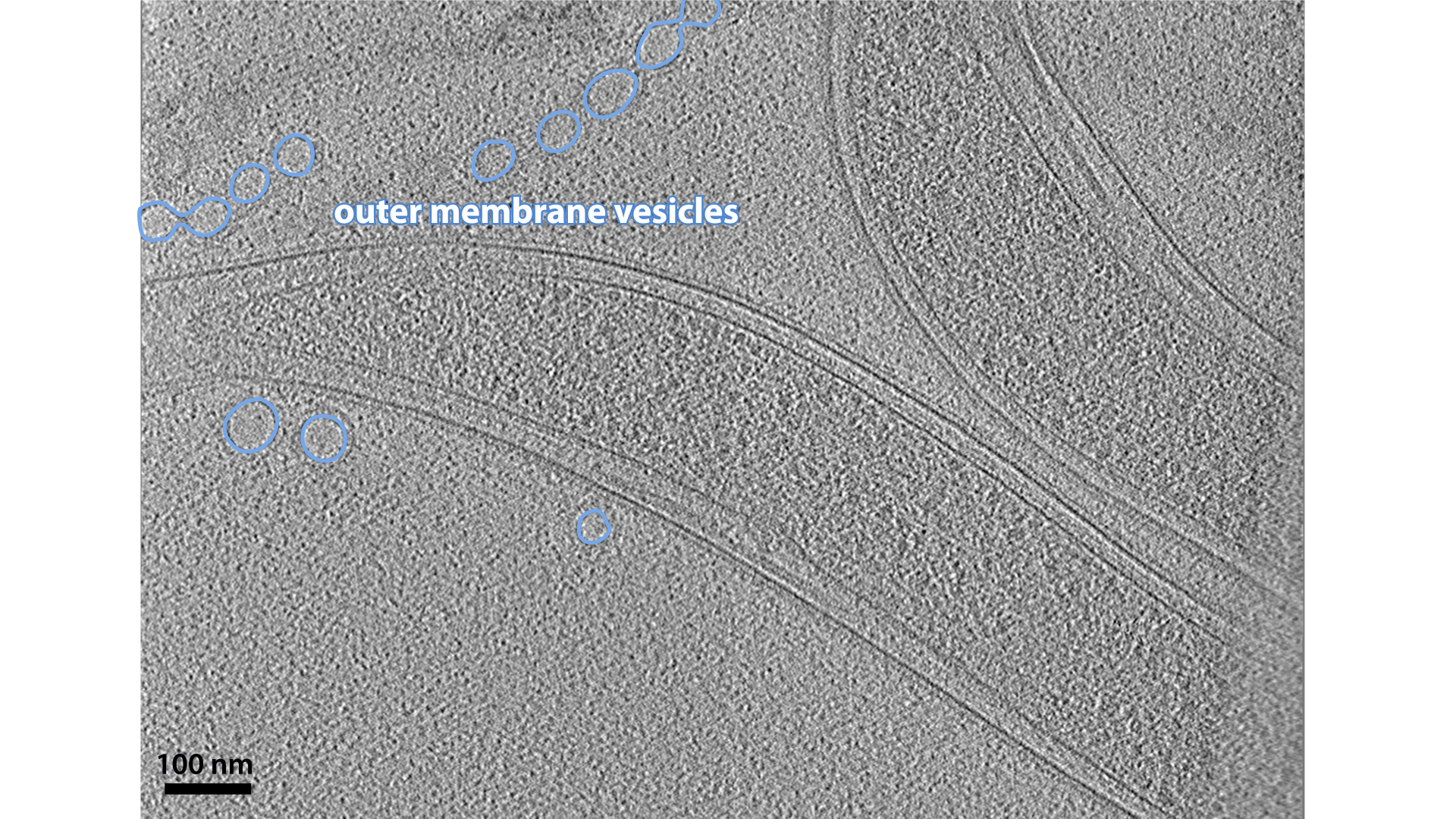What else can your cell do with an extra membrane? Since membranes make such excellent containers for molecules, why not get into the shipping business? In the coming chapters (especially Chapter 9), you will see some of the ways that cells interact with each other and their environment. For diderm bacteria, many of these interactions are made possible by outer membrane vesicles (“little bladders”)–self-contained pockets budded off the membrane. The vesicles may carry cargo of antibiotics to inhibit competitors’ growth, or toxins to lyse neighboring cells, or enzymes to digest those lysed remains into nutrients that your cell can use. Alternatively, they may carry emergency kits, first aid and survival factors for other members of a biofilm community. The appearance of these vesicles can vary as much as their contents (⇩). They are usually spherical, though, of a fairly consistent size, and often come off the cell at one or a few sites, forming chains, as you can see in this Myxococcus xanthus.
Not all diderms produce outer membrane vesicles, and even for those that do, we still do not know exactly how they do it. Maybe it happens spontaneously due to the physics of lipids and proteins in a certain configuration. Or maybe there is a dedicated protein machine in the membrane, blowing bubbles. Vesicles can also bud from the cytoplasmic or (for diderms) inner membrane into the cytoplasm or periplasm (⇩). This seems to be a less regulated process than outer membrane vesicle formation, and we see it in many species when they are stressed by low nutrients or high cell density. Cells shrink in harsh conditions (more on that in Chapter 8), so cytoplasmic or periplasmic vesicles may simply offer a place to put the extra membrane until the time comes to grow again. Just as with outer membrane vesicles, the appearance of cytoplasmic vesicles varies widely (⇩). Archaea also produce membrane vesicles (⇩). They have been studied less than their bacterial counterparts, but likely serve similar roles in metabolism and community interactions.












